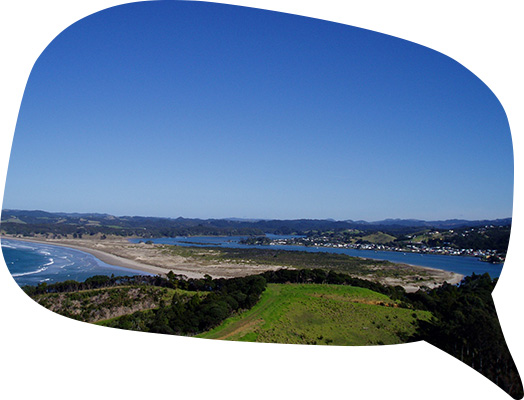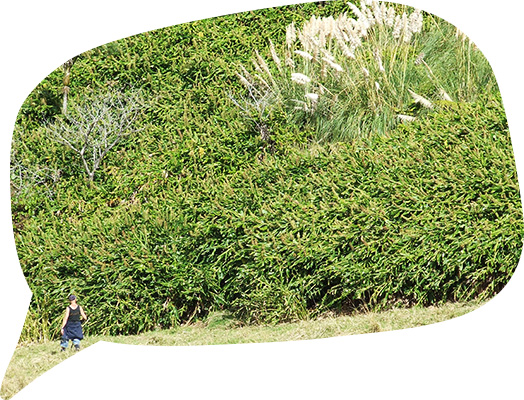
Wild Ginger in Northland
Wild Ginger originates in Nepal. The variety present in New Zealand is a hybrid of Kahili ginger and white ginger and was first introduced in the 1860’s as a garden plant because of the fragrant and colourful flowers. In its native range it is controlled by natural predators and stays as a ‘background plant’. However Wild Ginger loves parts of New Zealand, particularly those regions like Northland that have a warm, wet climate. A lack of native predators has allowed the plant to run rampant.
Growing over 2metres tall, Wild Ginger sprouts a large network of thick rhizomes through which it suckers and spreads. These rhizomes become almost impenetrable, making native seedling germination almost impossible and degrading habitat for ground dwelling birds like kiwi. Wild Ginger produces around 100 seeds per flower head every year. Birds can carry the seeds up to a kilometre from the parent plant. Small fragments of the rhizomes that are broken off by flood or machinery also sprout and form new infestations.

This high rate of spread makes Wild Ginger an ecosystem transformer. It takes over the forest floor and prevents native species from regenerating. As the canopy begins to die, Wild Ginger is the only plant that is left – this process is already well under way along Northlands coastlines and Wild Ginger now threatens some of our most important native kauri forests.
How can it be controlled?
Small patches of Wild Ginger can be controlled through digging out by hand or by herbicides containing metsulfuron-methyl. This is only financially viable for infestations under 1hectare. Landcare Research studies have shown that for any infestation from 1-100ha, the success rate for eradication decreases to 33% and for any infestation over 100ha, the success rate decreases to 25%. The use of herbicides is sometimes not possible in dense bush (where most of the infestations occur) or forestry areas, as metsulfuron-methyl can move through the soil and affect plants around the treatment site.
New Zealand needs to invest in smarter technologies to control forest invaders such as Wild Ginger. The most effective and sustainable tool for the future is most likely the use of a biological control agent – something that is a natural predator of Wild Ginger, brought in to reduce the population down to manageable level.
For further information on Wild Ginger, check out this link.











